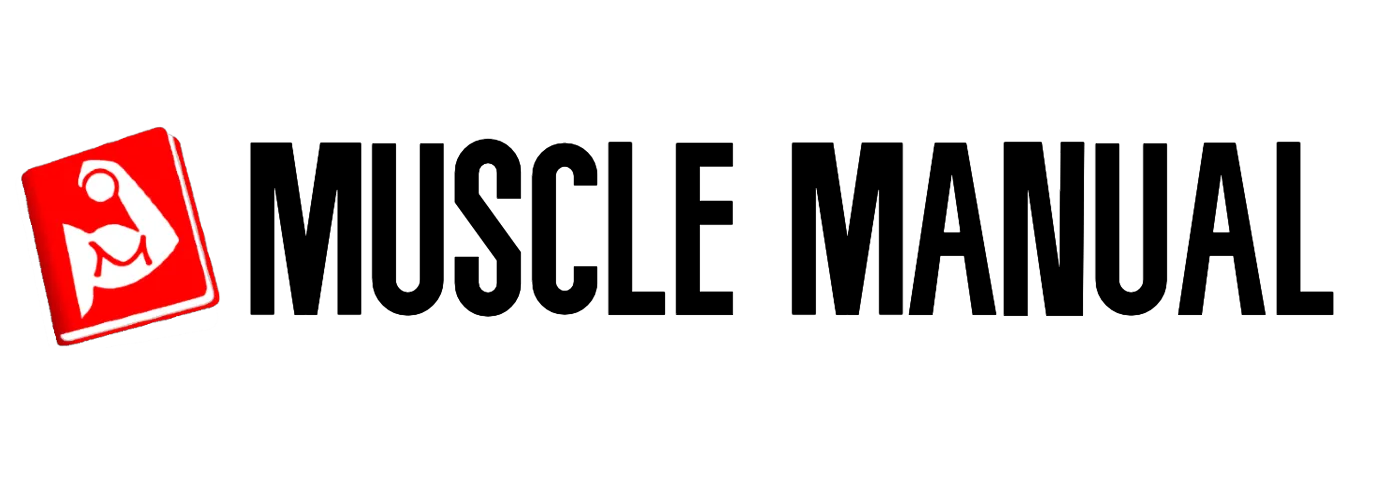Bulking and cutting can be super confusing. Especially when you’re trying to build a muscular physique but not seeing the results you desire.
But it’s actually not that hard.
By understanding the importance of body fat percentage and implementing effective bulking and cutting strategies, you can build a powerful, lean body that turns heads.
This comprehensive guide will walk you through everything you need to know about body fat percentage, lean bulking, nutrition, training strategies, and when to stop bulking (transitioning from bulking to cutting), so you can get on the path to your ideal physique.
Bodybuilding (which includes building muscle and losing fat) requires dedication, patience, and a well-rounded strategy that combines proper nutrition, training, and recovery. A crucial aspect of this strategy is understanding your body fat percentage and how it affects your ability to build lean muscle mass while minimizing fat gain.
Read on to discover the keys to successful bulking and cutting, and how to make the most of your efforts in the gym, including knowing when to stop bulking.
Key Takeaways
Understanding body fat percentage is essential for making informed decisions when bulking or cutting.
Lean bulking should focus on consuming high-quality protein sources in a controlled calorie surplus to maximize muscle growth and minimize fat gain.
Cutting calories, increasing protein and fiber intake, incorporating cardio exercises, and adjusting training routines can help achieve desired results while preserving muscle mass.
Understanding Body Fat Percentage

Knowing your body fat percentage is crucial for your bulking and cutting decisions.
When this ratio has been determined, it’s possible to decide whether you should focus on bulking or cutting. It’s the proportion of fat to your total body weight that plays a significant role in achieving an optimal physique.
By maintaining a low body fat percentage during your bulking phase, you can maximize muscle growth and minimize excess fat gain. This makes it easier to shed those extra pounds when it’s time to cut, revealing a muscular, defined body that aligns with your fitness goals.
Regular measurement and understanding of your body fat percentage’s ideal ranges for bulking and cutting are key to its effective management. This information will guide your decisions on when to increase or decrease your calorie intake, ultimately helping you build the physique you’ve always wanted.
How to Measure Body Fat Percentage
Tracking your progress during your bulking and cutting phases requires accurate measurement of your body fat percentage. Several methods are available to help you determine your body fat percentage, with the least expensive options being:
Calipers: measuring the thickness of skinfolds at various sites on your body
Visual assessment: comparing your appearance to images of individuals with known body fat percentages
U.S. Navy Body Fat Percentage Formula: using your neck, waist, and hip measurements (for women) to estimate your body fat percentage
Each method has its advantages and limitations, but they all can give you valuable insight into your current body composition.
When training my clients, I prefer the U.S. Navy Method. It’s the simplest solution, and anyone with a tape-measure can do it at home.
You don’t need to be super accurate when measuring bodyfat, but you do need to be consistent. Pick one method and stick with it when measuring your progress.
The Navy’s body fat calculator is estimated to be accurate within 1-3 percentage points, and the standard error deviation for calipers is 3-5%. By monitoring your body fat percentage regularly, you can make informed decisions about when to stop bulking and start cutting, optimizing muscle growth and minimizing fat gain.
Ideal Body Fat Percentages for Bulking and Cutting
The ability to build lean muscle mass and shed excess fat is largely influenced by your body fat percentage.
For optimal results during bulking and cutting, it’s important to stay within the recommended body fat percentage ranges.
For males, aim for a body fat percentage between 8-15%, while females should target a range between 17-25%. Staying within these ranges helps maximize muscle gain during the bulking phase and promotes a lean, defined physique during cutting.
A body fat percentage of 8-10% for men and 17-19% for women is ideal for lean bulking, as it promotes nutrient partitioning and insulin sensitivity, both crucial for growing muscle.
On the other hand, exceeding a body fat percentage of 15% for men or 25% for women may result in diminishing returns in muscle growth and an increased risk of fat gain.
Achieving fitness goals and maintaining a healthy body composition are aided by monitoring your body fat percentage using any of the methods listed above and maintaining it within the recommended ranges.
Lean Bulking vs. Dirty Bulking

Two primary approaches exist for building muscle: lean bulking and dirty bulking.
Lean bulking, also known as clean bulking, focuses on a controlled calorie surplus and emphasizes consuming high-quality protein sources to support muscle growth. This method seeks to balance weight gain and muscle growth without excessive fat accumulation, making it easier to lose weight during the cutting phase.
On the other hand, dirty bulking involves a more aggressive caloric surplus, often from calorie-dense, nutrient-poor foods, which can result in rapid muscle growth but also a higher risk of fat gain and gain weight.
While both approaches can lead to muscle growth, lean bulking offers several advantages over dirty bulking. By minimizing fat gain and emphasizing nutrient-dense foods, lean bulking promotes a healthier, more sustainable approach to building muscle.
In contrast, dirty bulking can lead to excessive fat gain, lower testosterone levels, and an increased risk of leptin resistance, all of which can hinder your progress and negatively affect your health.
Strategies for Lean Bulking
A strategic approach to nutrition is required for lean bulking, with an emphasis on correct macronutrient ratios and nutrient-dense food choices.
To achieve a lean bulk, aim for a calorie intake that is 5% to 10% higher than your daily weight maintenance calorie requirements.
Don’t know your daily maintenance calorie intake? Just search up “TDEE Calculator” in Google and you can find out with just a few inputs, like your age, weight, and height. Other popular apps, like MyFitnessPal will also calculate this for you pretty easily.
This moderate surplus helps build muscle without excessive fat gain.
In terms of macronutrients, focus on consuming:
- High-quality protein sources, such as lean meats, seafood, beans, and dairy products to support muscle growth
- Complex carbohydrates and healthy fats in your diet
- Nutrient-dense foods like sweet potatoes, rice, fruit, oats, vegetables, whole grain bread, eggs, avocados, and nuts to fuel your workouts and support muscle growth.
By making smart food choices and adhering to a controlled calorie surplus, you can build lean muscle mass while minimizing fat gain during your bulking phase.
Dangers of Dirty Bulking
Despite its potential to rapidly increase muscle size, dirty bulking carries several risks and drawbacks.
Consuming a large calorie surplus, often from unhealthy food sources, can lead to excessive fat gain, making it more challenging to achieve a lean, muscular physique during cutting.
Additionally, dirty bulking can negatively impact your hormone levels, resulting in lower testosterone and increased risk of leptin resistance, both of which hinder muscle growth and fat loss.
To avoid the pitfalls of dirty bulking, focus on implementing a lean bulking approach with a controlled calorie surplus and nutrient-dense food choices. This strategy will promote muscle growth while minimizing fat gain, setting you up for success during your cutting phase and ultimately helping you achieve your desired physique.
Nutrition Tips for Effective Bulking

Effective bulking hinges on proper nutrition, which supplies the necessary energy and nutrients for muscle building.
By focusing on calorie intake, macronutrient ratios, and nutrient timing, you can optimize your nutrition for muscle growth and minimize fat gain during your bulking phase.
In addition to selecting the right foods and establishing the appropriate calorie surplus, make sure you’re consuming enough protein, carbohydrates, and healthy fats to support muscle growth.
Nutrient timing and distribution makes a difference. Consuming meals at regular intervals throughout the day ensures your body receives the necessary nutrients to build and maintain muscle.
By implementing a well-rounded nutrition strategy that prioritizes high-quality food sources and proper macronutrient ratios, you’ll be well-equipped to maximize muscle growth during your bulking phase.
Calorie Intake and Macronutrient Ratios
For optimal muscle growth and minimal fat gain during bulking, we should determine the appropriate calorie intake and macronutrient ratios.
As a general guideline, aim for a calorie intake that is 5% to 10% higher than your daily weight maintenance calorie requirements. This moderate surplus will help build muscle without excessive fat gain. In terms of macronutrients, it is recommended that athletes consume 45-60% of their calories from carbohydrates, 30-35% of their calories from protein, and 15-30% of their calories from fat during bulking season.
Aim for about one gram of protein per pound of bodyweight on a daily basis.
By adhering to these guidelines and regularly monitoring your body fat percentage, you can effectively maximize muscle growth and minimize fat gain during your bulking phase. Remember that individual needs may vary, so it’s important to listen to your body and adjust your nutrition plan accordingly.
Nutrient Timing and Distribution
Stimulating muscle protein synthesis and maintaining an anabolic state are closely tied to proper nutrient timing and distribution.
Consuming meals at regular intervals throughout the day, with a focus on protein consumption, ensures your body receives the necessary nutrients to build and maintain muscle. Try to maintain a consistent eating pattern throughout the day, as this helps to keep your body in an anabolic state and supports muscle growth.
For optimal results, try to eat a meal every 4 to 4.5 hours and prioritize protein consumption. In addition to protein, be sure to include complex carbohydrates and healthy fats in your meals to fuel your workouts and support muscle growth.
By paying close attention to nutrient timing and distribution, you’ll be better equipped to maximize your muscle-building potential during your bulking phase.
Training Programs for Maximizing Muscle Growth

Maximizing muscle growth during your bulking phase demands a well-structured training program.
By focusing on exercise selection, frequency, and recovery, you can efficiently stimulate muscle growth and minimize the risk of overtraining.
In addition to proper nutrition, implementing effective training strategies will ensure your body has the necessary stimulus to build lean muscle mass and achieve your desired physique.
Choosing the right exercises and workout frequency is important for promoting muscle growth and strength gains during bulking. Also, recovery and sleep play a crucial role in preventing overtraining and supporting muscle growth.
By incorporating these elements into your training routine, you’ll be well on your way to a muscular, defined body.
Exercise Selection and Frequency
Selecting the right exercises and establishing an appropriate workout frequency are essential to maximize muscle growth during your bulking phase. Some of the most effective exercises for building muscle include:
- Squat
- Deadlift
- Military press
- Bent-over row
- Bench press
- Chin-ups and Pull-ups
These compound exercises target multiple muscle groups, promoting overall muscle growth and strength gains.
When it comes to workout frequency, aim to strike a balance between providing enough stimulus for muscle growth and allowing adequate recovery time. A well-structured training program will typically involve 3 to 5 workouts per week, targeting different muscle groups each session.
By implementing a varied, challenging workout routine, you’ll promote muscle growth and achieve your desired physique.
Importance of Recovery and Sleep
Despite often being overlooked, recovery and sleep are crucial to supporting muscle growth during a successful bulking phase.
Adequate recovery allows your muscles to repair and grow, while sufficient sleep helps regulate hormones such as testosterone and growth hormone – both essential for muscle growth.
To ensure you’re giving your body the rest it needs, here are some tips:
- Aim for at least 7 to 9 hours of sleep each night
- Incorporate rest days into your training program
- Prioritize proper nutrition and hydration to support recovery and muscle growth
By the way, it’s okay to skip a workout here and there!
If you’re not recovered yet by the next workout, skip a day or two if you need to. Remember, there’s no point in working out at all if you don’t allow your muscle to recover and actually grow.
Transitioning from Bulking to Cutting

Once a successful bulking phase is complete, the transition to cutting is necessary to shed excess body fat and reveal a lean, muscular physique.
This process requires careful planning and adjustments to your calorie intake and training routine. By implementing a gradual transition and maintaining proper nutrition, you can:
- Preserve muscle mass while shedding body fat
- Ensure that your body is getting the nutrients it needs to support your workouts and recovery
- Monitor your progress and make adjustments as needed to continue making progress towards your goals
The key to a successful transition from bulking to cutting lies in gradually reducing your calorie intake and adjusting your training routine to maintain muscle mass.
Let’s discuss this process:
Reducing Calorie Intake
A gradual reduction in calorie intake to create a caloric deficit is crucial as you transition from bulking to cutting. This deficit will help you shed body fat while preserving muscle mass. Here’s how to do it:
- Start by decreasing your daily calorie intake by 10-15%.
- Monitor your progress closely.
- Adjust your calorie intake as needed to achieve your desired rate of fat loss.
In addition to reducing calorie intake, consider incorporating the following cardio exercises into your routine to increase your caloric deficit further:
- Running
- Cycling
- Swimming
- Jumping rope
- High-intensity interval training (HIIT)
- Competitive sports
Be careful not to overdo it, as too much cardio can lead to muscle loss.
When you strike a balance between reduced calorie intake and increased energy expenditure, you’ll set yourself up for success during your cutting phase.
Adjusting Training Routines
Maintaining muscle mass while shedding body fat during your cutting phase requires useful adjustments to your training routine. Here are some tips to help you:
- Focus on lifting heavy weights with proper technique.
- Incorporate exercises that target your entire body. Also knowns as compound exercises.
- This will help preserve muscle mass and promote strength gains, even as you reduce your calorie intake.
This is going to help you preserve muscle mass and strength gains even as you reduce your calorie intake.
In addition to adjusting your lifting routine, be sure to prioritize recovery and sleep. Adequate rest is essential for maintaining muscle mass and preventing overtraining during your cutting phase.
Tips for Efficient Cutting

You’re all bulked up, great! Now what?
Now it’s time to cut and show off those six-pack abs!
Here are some key strategies to consider:
- Focus on cardio exercises to increase calorie burn and create a caloric deficit. Aim for at least 3 cardio sessions per week.
- Maintain a moderate caloric deficit by reducing your daily calorie intake. Use an app to track your caloric intake.
- Ensure an adequate protein intake to support muscle preservation and recovery.
- Increase your fiber intake to promote satiety and support healthy digestion.
Implementing these tips will help you achieve a lean, defined physique that showcases your muscle gains from your bulking phase.
Remember, consistency and patience are key when it comes to cutting. Stay committed to your nutrition and training plan to see your hard-earned results, and don’t worry if you go over your caloric target here and there. It happens to all of us.
Cardio and Caloric Deficit

An efficient cutting phase fundamentally requires the incorporation of cardio exercises and creation of a caloric deficit.
Cardio helps burn calories and fat, while a caloric deficit ensures that your body uses stored fat for energy. To create a caloric deficit, reduce your calorie intake and/or increase your energy expenditure through exercise.
Be mindful not to create too large of a caloric deficit, as this can lead to muscle loss and hinder your progress. Aim for a moderate deficit that allows you to lose weight at a steady pace while preserving muscle mass.
Typically, my clients will go on a 250-500 caloric deficit per day. See what works for you.
Protein and Fiber Intake
Preserving muscle mass and promoting satiety during cutting requires the maintenance of protein and fiber intake.
Protein supports muscle growth and repair, helping to maintain muscle mass even as you reduce your calorie intake. Fiber, on the other hand, keeps you feeling full and satisfied, making it easier to manage hunger and stick to your cutting diet.
To ensure you’re getting enough protein and fiber during your cutting phase, focus on consuming lean protein sources like chicken, fish, and legumes, as well as fiber-rich foods such as fruits, vegetables, and whole grains.
Summary
Understanding body fat percentage and implementing effective bulking and cutting strategies are essential for achieving a lean, muscular physique.
By focusing on proper nutrition, training, and recovery, you can maximize muscle growth during your bulking phase and shed excess body fat during cutting.
Remember, consistency and patience are key to success in bodybuilding. Stay committed to your plan, monitor your progress, and adjust as needed to achieve your desired results.
Oh and, don’t worry about skipping a workout or two. Or going over your caloric deficit on a day or two. It’s all a long-term game, and the best results come from consistency, not perfection!
Now that you’re equipped with the knowledge and tools necessary to optimize your bulking and cutting phases, it’s time to put these strategies into action and start working towards your dream physique.
Frequently Asked Questions
How long should I keep bulking?
For most, a bulking cycle should last between 16 and 26 weeks for effective results. You can start to see some progress after 6-8 weeks, but extending the bulk beyond that is recommended.
When should I start cutting instead of bulking?
If your body fat percentage is below 10-15%, then continue bulking to reach your goals. But if your body fat is 20% or more, it’s best to start a cutting phase.
How often should you switch from bulking to cutting?
For most people, it’s recommended to bulk for 2-3 months, then cut down until the desired fat loss is achieved. Everyone will need a different amount of time for cutting.
What is the ideal body fat percentage range for bulking?
For males, the ideal body fat percentage range for bulking is 8-15%, while females should target a range between 17-25%.
What are the benefits of lean bulking compared to dirty bulking?
Lean bulking is a healthier and more efficient option compared to dirty bulking, as it promotes muscle growth with minimal fat gain. Dirty bulking on the other hand, can lead to rapid muscle growth but also a higher risk of fat gain.


Recent Comments